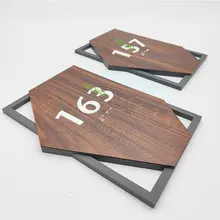Insulated fabric is a material designed to provide thermal insulation, meaning it helps regulate temperature by trapping heat. The primary purpose of thermal insulation fabric is to regulate and maintain temperature by trapping heat and preventing its escape, thus keeping the wearer warm in cold conditions. The insulation in these fabrics is typically achieved using synthetic fibers, natural fibers, or a combination of both. This type of fabric is commonly used in various products, such as blankets and sleeping bags, and even in some industrial applications. Browse for cotton insulation at Alibaba.com.
Types of thermal insulation fabric
One common type is synthetic insulated fabrics, which utilize materials such as polyester or nylon combined with insulating fibers. It is known for retaining warmth even when wet, making it a good choice for wet or humid conditions. Moreover, fleece is a thermal insulation fabric that traps heat due to its lofted structure. It is breathable, lightweight, and dries quickly. Fleece is commonly used in blankets and other cold-weather gear. Down is lightweight, highly compressible, and provides significant warmth without adding much weight, but it can lose its effectiveness when wet. Another category includes natural insulated fabrics, incorporating materials like wool or cotton. Wool can regulate temperature, wick moisture, and provide warmth even when damp.
Benefits of a thermal insulation fabric
One primary advantage is their ability to provide thermal insulation, regulating the body temperature in different environments. Whether using natural down, synthetic fibers, or other insulating materials, insulated fabrics help retain heat and keep individuals warm. Additionally, these thermal insulation fabrics are known for their lightweight construction. It ensures that the insulation doesn't add unnecessary weight to clothing or products, making them a good choice for activities where mobility is essential. Many insulated fabrics are designed to be breathable, allowing moisture and excess heat to escape. Furthermore, the waterproof insulated fabric can protect against rain and snow. The waterproof layer prevents water from penetrating the thermal insulation fabric.
Applications of thermal insulation fabrics
A thermal lining fabric is typically used in winter jackets and gloves to provide insulation and keep the wearer warm in cold weather. Insulated fabrics, especially those with down or synthetic insulation, are widely used to construct sleeping bags, ensuring insulation during cold nights. A thermal lining material enhances the insulation properties of blankets and comforters, providing warmth for a comfortable night's sleep. In addition to personal clothing and gear, thermal lining fabric can be used in home insulation to improve energy efficiency and regulate indoor temperatures. Moreover, using insulation fabric in a takeout bag can help keep food warm by reducing the transfer of heat between the inside and outside of the bag. The insulation fabric can be particularly useful for maintaining the temperature of hot food during transportation.











































 浙公网安备 33010002000092号
浙公网安备 33010002000092号 浙B2-20120091-4
浙B2-20120091-4